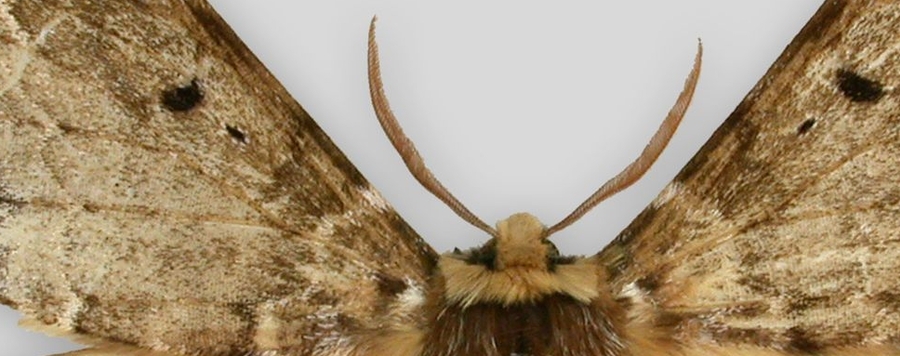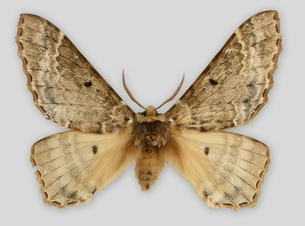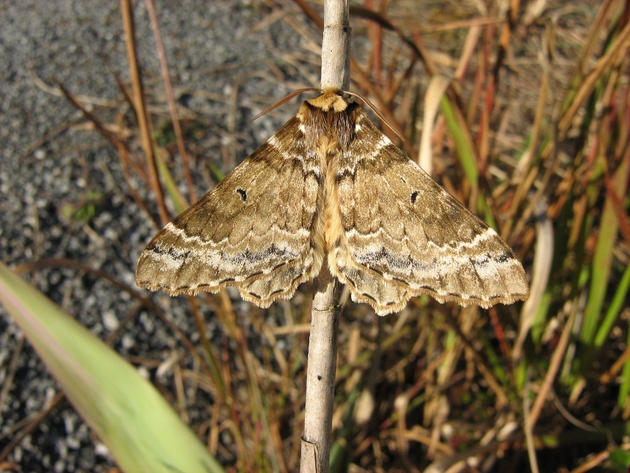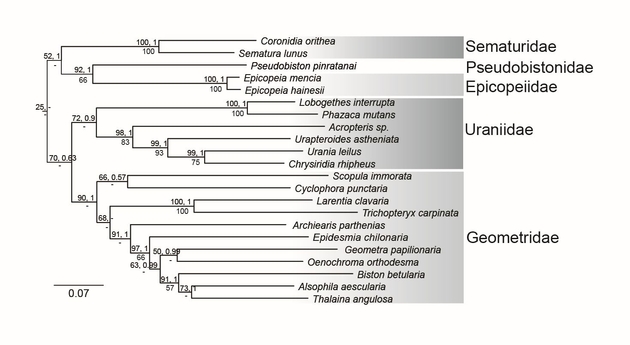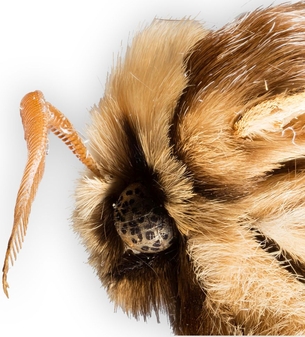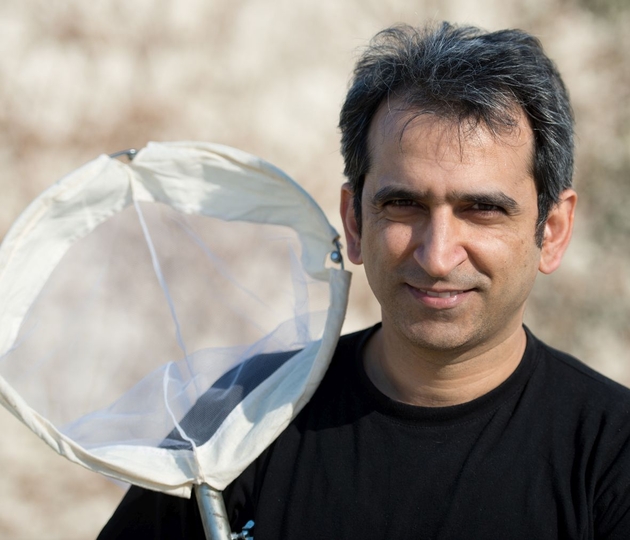Stuttgart/Bonn 16.07.2015. A moth searching for its relatives: it may take many years from the discovery of a species and its scientific description to its systematic classification. For the moth family “Pseudobistonidae” it took 26 years of research. Now an international research cooperation with experts from the Natural History Museums in Stuttgart and Bonn (Germany) scientifically described the new family. The results of this study have been published in the scientific journal Scripta Zoologica.
The first specimen of the moth Pseudobiston pinratanai was captured in 1989 in northern Thailand and was described in 1994 by Japanese lepidopterist Hiroshi Inoue.
This specimen belonged to an unknown species and genus. However, its higher systematic placement was also unclear. The combination of the morphological characters of Pseudobiston pinratanai at first did not allow a consistent classification within Macrolepidoptera. As no genetic data were available at that time, scientists could not solve the puzzle until much later.
Together with colleagues from the Natural History Museums in Bonn and Paris as well as the Universities of Vienna and Turku, Dr. Hossein Rajaei has worked since 2012 on a scientific research study to define the systematic position of Pseudobiston pinratanai. In a combined integrative approach of classic morphological and molecular methods, the scientists were able to unravel the systematic position of this enigmatic species. The molecular results confirmed what the experts had already suspected: Pseudobiston pinratanai does not belong to the family of so-called geometer moths (Geometridae), but instead represents a separate lineage within Macrolepidoptera and shows a close relationship to the species-poor Asian family Epicopeiidae. In the second part of their study, the researchers found multiple morphological characters that confirmed the molecular results. They compared characters of all major body parts, especially the head, thorax, and wings, and compared them to other families of Macrolepidoptera. Thus Pseudobiston pinratanai was assigned as sole member of the new family Pseudobistonidae.
“This research shows how important the synthesis of comparative and molecular genetic methods is for the determination of species. Integrative taxonomy, the interplay of these different methods, is a critical area of expertise of natural history research museums. The discovery of Pseudobistonidae also makes it clear how productive collaborations between natural history museums can be. I congratulate my colleagues on this great success”, states Johanna Eder, director of the State Museum of Natural History in Stuttgart.
One collection specimen of Pseudobiston pinratanai in the lepidoptera collection of State Museum of Natural History Stuttgart. Copyright: SMNS
Male specimen of Pseudobiston pinratanai in rest position. Copyright: Thomas Ihle (Chiang Mai, Thailand).
The cladogram shows the phylogenetic position of Pseudobiston pinratanai inside superfamily Geometroidea.
Copyright: Rajaei et al. 2015
The head of male specimen of Pseudobiston pinratanai. Copyright: Rajaei et al. 2015
Dr. Hossein Rajaei is the curator of Lepidoptera collection in State Museum of Natural History Stuttgart. Copyright: SMNS, A. Staniczek
Authors:
Dr. Hossein Rajaei, State Museum of Natural History Stuttgart, Germany
Dr. Carola Greve, Zoological Research Museum Alexander Koenig - Leibniz Institute for Animal Biodiversity, Bonn, Germany
Dr. Harald Letsch, University of Vienna, Vienna, Austria
Dr. Dieter Stüning, Zoological Research Museum Alexander Koenig - Leibniz Institute for Animal Biodiversity, Bonn, Germany
Prof. Niklas Wahlberg, University of Turku, Finland
Prof. Joël Minet, Museum National d’Histoire Naturelle, Paris, France
Prof. Bernhard Misof, Zoological Research Museum Alexander Koenig - Leibniz Institute for Animal Biodiversity, Bonn, Germany
http://onlinelibrary.wiley.com/doi/10.1111/zsc.12108/abstract
Further Information
Media Contact
Dr. Hossein Rajaei
State Museum of Natural History Stuttgart
Tel: +49 (0)711- 89 36-223
E-Mail: hossein.rajaei [at] smns-bw.de
Dr. Hossein Rajaei is entomologist and specialist of the Lepidoptera at the State Museum of Natural History Stuttgart.
Meike Rech (Press)
State Museum of Natural History Stuttgart
Tel: +49 (0)711- 89 36-107
E-Mail: meike.rech [at] smns-bw.de
bonn.leibniz-lib.de



